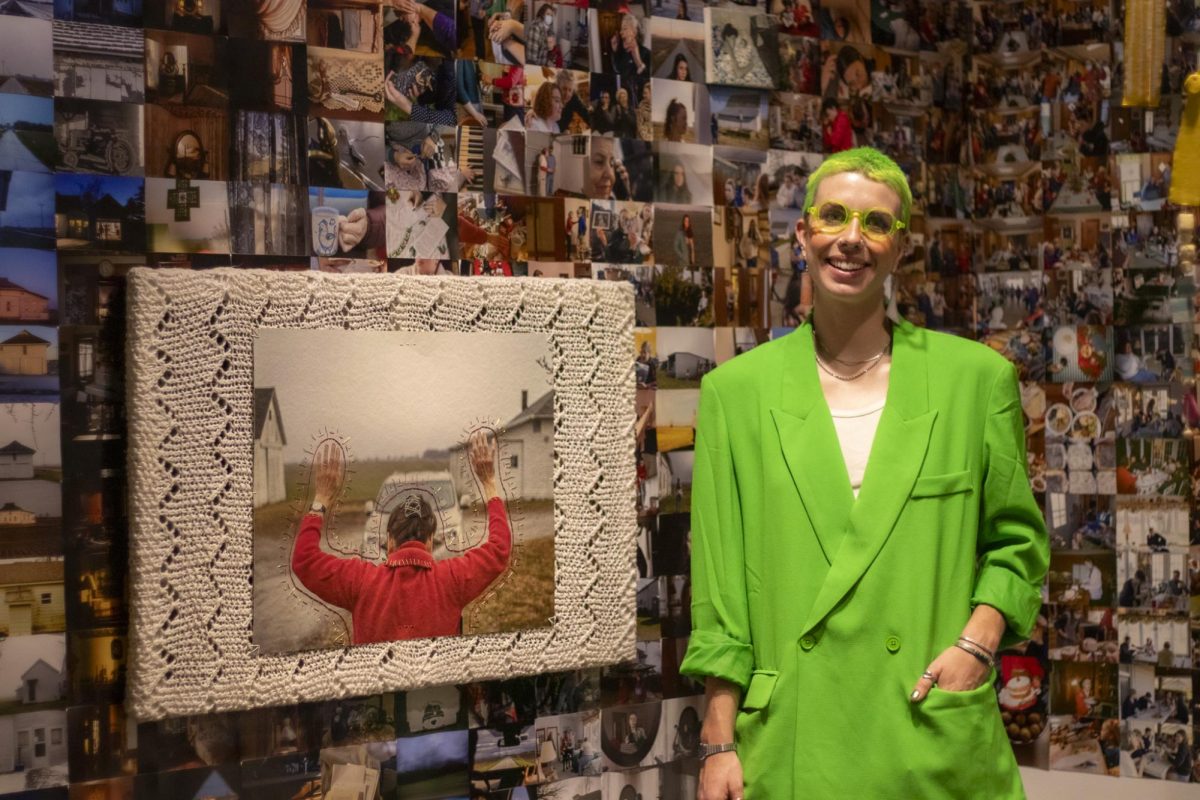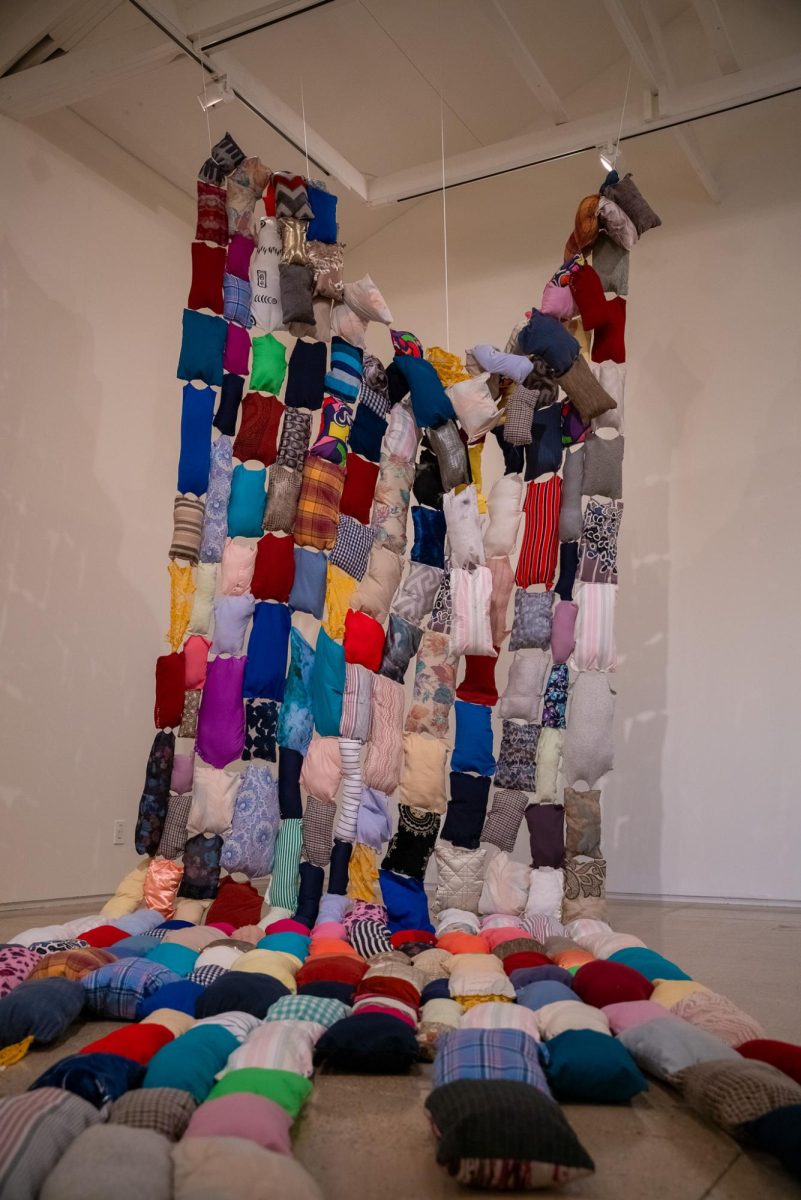Movie soundtracks have become a staple of popular culture. A single note from the iconic “Indiana Jones” theme elicits adventure, while a piano key from Justin Hurwitz’s “Epilogue” forms tears in the eyes of its listener. Music tells a story; a tuba writes that story.
On Friday Sept. 6, Marc Guillen, donning a tuba, performed his senior recital, “Of Cloaks and Daggers.” The set list included works from Anna Baadsvik, James Meador, Brian Sadler, Benjamin McMillan and Satoshi Yagisawa. The performance was played alongside the tragic story of Samuel, a man whose home was destroyed. Guillen exemplified the humor and might of the tuba.
“Of Cloaks and Daggers” begins with the return of Samuel to his destroyed village. Left with nothing, he begins a journey back to the city. This scene culminates in the playing of Baadsvik’s “New Kid,” with Guillen on tuba and Jeong-Eun Lee on the piano. The piece begins melancholically — akin to a saddened warrior. This is accentuated by the emphasis of the piano in the beginning. However, the tuba quickly takes over, squabbling the gloominess and infusing the performance with a sense of triumph. As Guillen plays, the tuba hinders the audience’s view of his face; if Guillen is playing Samuel, one cannot but feel the identity crisis of the main character in “Of Cloaks and Daggers.” The man has disappeared, all that is left is the music of his world and the hope it creates.
As he prowls the night, Samuel decides to wash away his pains through intoxication. This scene blurs the line between story and recital, as Guillen embarks on Meador’s “Six-Pack,” a piece meant to be played with an accompanying beer between each set.
For the sake of the recital, Guillen downs six bottles of water, embodying the different emotions of intoxication felt by Samuel. At one point, Guillen struggled to open a bottle of water, demonstrating his commitment to performance and music. The set offers much humor as Guillen toys with the tuba to create a variety of sounds not typically associated with the tuba, specifically the emitting of a siren-like shrill.
At this point, the story built by Guillen has truly taken off — continuously reminding the audience of music as a display of emotion and a way of storytelling. Samuel partners up with two strangers to commit a heist. This scene guided by the notes of Sadler’s “Journey for Tuba,” dramatizes the upcoming events.
The lights dim, espionage ensues. When Guillen enters stage left, the audience no longer watches a tuba recital but instead a Mission Impossible-esque scene revolving around the capturing of a tuba. Once the heist is completed, Guillen breaks into McMillan’s “Tubas of the Apocalypse,” a piece invoking the feel of a musical score. A constant throughline underscored by the bellowing of tuba notes, reminiscent of John Williams’ “Imperial March” helps convey the much more dramatic side of the tuba. The audience no longer watches the tragic fall of Samuel but an adventure of self-discovery and deception.
After being betrayed by one of the strangers, Samuel is locked in a cell. With the help of Kassador, he escapes. Guillen infuses the prison scene with Yagisawa’s “Salome at the Prison.” Similar to the first song in Guillen’s setlist, Yagisawa’s music creates a sense of hopelessness, this time with the tuba instead of the piano. However, it quickly transitions into a tune filled with gusto and urgency.
“Of Cloaks and Daggers” climaxes with a duel between Samuel and his betrayer, Venivren. This is Samuel’s big moment and this was Guillen’s final hurrah of the night. As the duel ensued, Guillen entered the stage, alone. He sat and immediately started playing. Confident and sure of himself, Guillen plays Sadler’s “Concerto for Contrabass Trombone” a piece with constant themes throughout alluding to melodies of a film score. Up close, Guillen is focused and the backdrop of drums fades, leaving Guillen with his tuba, the sound of clacking keys and the rapid inhaling and exhaling of his breath in preparation for the piece’s final arc. As the song closes, Guillen rises to the occasion as the tuba bellows notes paralleling his own immense triumph within his senior recital.
Guillen’s recital shines a light on his musical ability and his role as a storyteller. A stellar performance that pushes the boundaries of what music can be and what it should be.
“Growing up I’ve done a lot of those ‘Dungeons and Dragons’ kind of things and I also do some of those foam fighting sports that are medieval ones,” Guillen said. “I’m very prevalent around the culture of that kind of theme. I really wanted to showcase that here tonight on stage.”
Guillen’s experience in foam fighting sports was center stage throughout his entire performance. He held the tuba poised like a warrior, shrinking back whenever in danger and then quickly commanding the stage and adding to the character development on stage. The characterization as well as the choreographed narrative added to the audience’s engagement.
“Typically a lot of music that does not have a lot [of] narrative in between pieces,” Guillen said. “I really wanted people to follow that narrative and emotion that is happening within each piece and the narrator, as well, throughout the entire recital.”
Guillen’s senior recital exemplified the bonding of the liberal arts at UTSA. Within the music is a story to be told, one must simply listen carefully. For Guillen, that story involved tragedy, triumph and the tuba.









